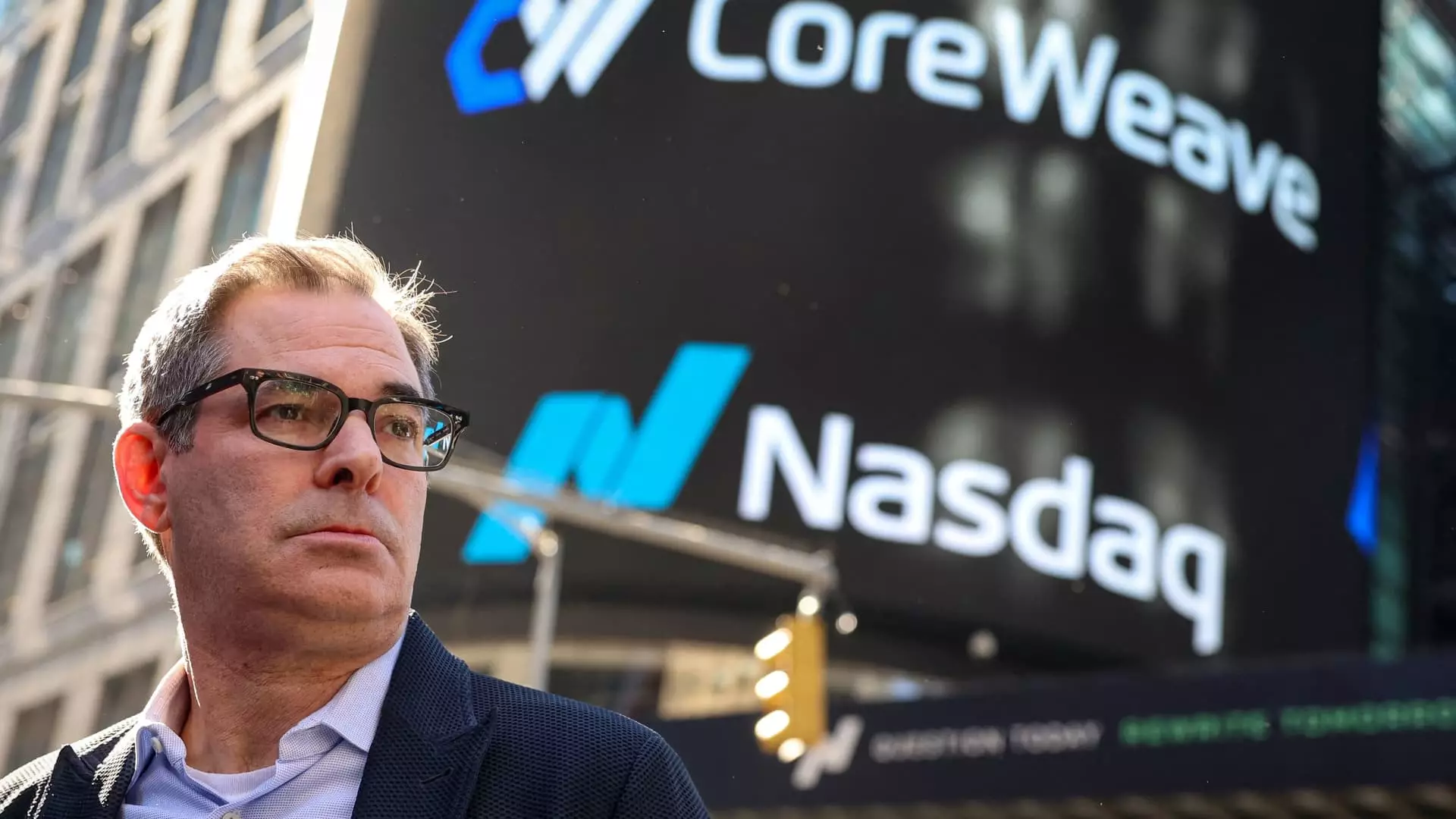CoreWeave, the AI service provider flexing its muscles in the booming field of artificial intelligence, has found itself navigating a tricky path since its market debut in March. The company recently revealed its burgeoning revenues and ambitious growth plans, projecting capital expenditures ranging between $20 billion to $23 billion for the year. This staggering figure stands in stark contrast to analysts’ average estimates of just $4.61 billion, drawing a bead of skepticism from investors who have started to pull back the curtain on this so-called success story.
Just as a mirage fades as one approaches, CoreWeave’s impressive financial metrics risk being overshadowed by the reality of its debt load and the legitimacy of its surging demand. One would expect unbridled optimism in the face of such bold figures, yet CoreWeave’s stocks demonstrated volatility post-earnings, oscillating between gains and losses—indicative of a larger sentiment brewing amongst investors. The company’s CEO, Michael Intrator, assures that a flurry of demand signals from their key clients is prompting them to ramp up infrastructure, but these promises feel more like optimistic rallying cries than solid commitments.
The Dangers of Overextension
In his recent interview, Intrator emphasized the need for rapid scaling to accommodate requests from heavyweights like Microsoft and Nvidia, both of whom have thrown their weight behind CoreWeave. However, while scaling operations is often seen as an indicator of success, it can just as easily lead to overextension—a perilous edge CoreWeave seems to be teetering on.
Worrisome signs have surfaced from the likes of DA Davidson’s analyst Gil Luria, who downgraded CoreWeave’s offerings due to an unsustainable debt structure. Earning 5% on assets while accruing a 12.5% interest is a losing battle, one that raises questions on the long-term viability of the company. Meeting short-term demand may yield impressive growth rates today, but what often goes unexamined is the collateral damage caused in the pursuit of maximizing immediate gains. When a company is already operating 33 data centers and aiming for a revenue run rate of $4 billion, concerns around scaling effectively become a resounding alarm.
Pomp and Circumstance or Genuine Growth?
CoreWeave appears to paint an appealing picture with its revenue growth predictions, boasting an outrageous 363% revenue climb. The projections for second-quarter revenues of between $1.06 billion to $1.1 billion further fan the flames of optimism. Yet, one must approach these figures with caution. Upon deeper inspection of the underlying financial health, the truth reveals itself: revenue backlog grew only in illusion rather than substance—a fact obscured by a mixture of stock-based compensation and significant net losses widening from $129.2 million last year to $314.6 million today.
The company’s capacity for growth feels akin to a double-edged sword, propelling them into a realm of high expectations while simultaneously threatening drastic declines. Revenue growth at such a pace often begs the question of sustainability. With a net loss ballooning substantially due to $177 million in stock-based compensation related to its IPO, the cost of expansion might eventually overshadow the benefits.
The Illusive Promise of the AI Future
In a world engaged in a mad dash toward AI supremacy, CoreWeave’s story serves as a cautionary tale for those entranced by rapid growth metrics. The allure of artificial intelligence is undeniable, but this does not safeguard one from the perils of business missteps. The tech industry thrives on innovation, yet the fundamental business principles of risk assessment and strategic planning remain paramount.
The narrative surrounding AI is currently rife with excitement, almost akin to the gold rush, with companies racing to establish themselves as frontrunners. However, CoreWeave must be wary—momentum can quickly turn into a mirage. As the risks associated with debt and rapidly changing demand loom larger, the critical question becomes whether companies like CoreWeave can sustain their relevancy without succumbing to the pressures of overreach.
The promises made today may not hold true tomorrow, and investors must assess whether they are backing a floundering entity swimming against strong currents, or a genuine player poised for groundbreaking innovations in the still-nascent AI landscape.

